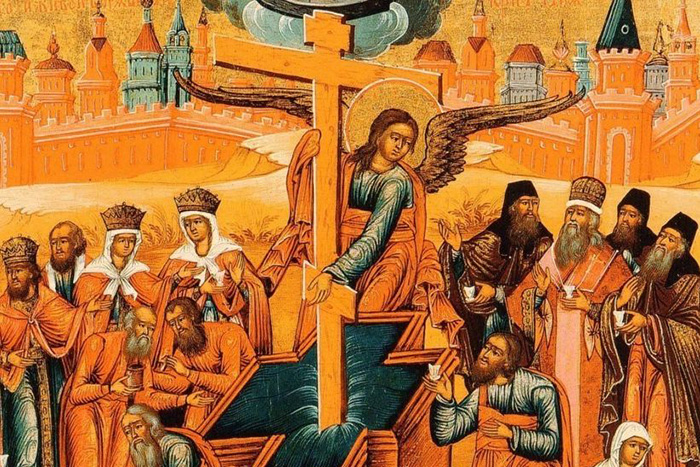“On this day, the Tuesday of St. Thomas week, according to the order instituted by our Holy Fathers, we call to remembrance, in Paschal joy, all those who have died from the beginning of the ages in faith and in the hope of resurrection and life eternal.”
“Having previously celebrated the radiant feast of Christ’s glorious Resurrection, the faithful commemorate the dead today with the pious intent to share the great joy of this Pascha feast with those who have departed this life in the hope of their own resurrection. This is the same blessed joy with which the dead heard our Lord announce His victory over death when He descended into Hades, thus leading forth by the hand the righteous souls of the Old Covenant into Paradise. This is the same unhoped-for joy the Holy Myrrhbearing Women experienced when discovering the empty tomb and the undisturbed grave clothes. In addition, this is the same bright joy the Holy Apostles encountered in the Upper Room where Christ appeared though the doors were closed. In short, this feast is a kindred joy, to celebrate the luminous Resurrection with our Orthodox forefathers who have fallen asleep.
“There is evidence of the commemoration of the dead today in the writings of the Church Fathers. St. John Chrysostom mentions the commemoration of the dead performed on Tuesday of St. Thomas week in his “Homily on the Cemetery and the Cross.”
“Today, the faithful departed are remembered in Divine Liturgies, ‘koliva’ is prepared and blessed in the churches in memory of those who have fallen asleep, and the Orthodox graves in cemeteries are blessed by the priests and visited by the faithful. On this day alms are given to the poor. Furthermore, it should be noted that due to the great spiritual joy this jubilant commemoration bears, it is called in the Slavonic tongue, ‘Radonitsa,’ or Day of Rejoicing.”
From the “Synaxarion of the Lenten Triodion and Penecostarion”
(published in 1999 by HDM Press, Rives unction, Michigan) on “Radonitsa”
***
A note in the English-language edition of the Synaxarion says that the above account was written “by a monk who wished to remain annonymous.” This account does not appear in the Slavonic or Greek Pentecostaria.
The development of a special commemoration of the dead during Thomas Week is undoubtedly related closely to the fact that memorial services are prohibited by the Typicon from being served from Great Thursday through Thomas Sunday. Thus, in the entry for Holy and Great Thursday, the Typicon states: “It is fitting to know: That the Litia for the reposed does not take place in the narthex until Thomas Sunday.” Then, in the entry for Monday of Thomas Week, the Typicon states at the end of the instructions for Matins and the First Hour: “And the usual Litia in the narthex.” Thus, the begining of Thomas Week presents the first opportunity to commemorate the departed (other than at the Proskomidia) since the middle of Passion Week.
It is interesting to note that in the Typicon and Pentecostarion that are currently in use in the Russian Church, there is no specific mention of a commemoration of the dead on Tuesday of Thomas Week, and the services appointed for that day do not contain any requiem elements. Nonetheless, it is quite common to serve a General Panikhida in church on that day and also to serve Requiem Litias at the graves of the departed.
Their are many folk customs associated with Radonitsa. Perhaps other members of the Ustav List would like to share their knowledge and experience of these customs with us.





